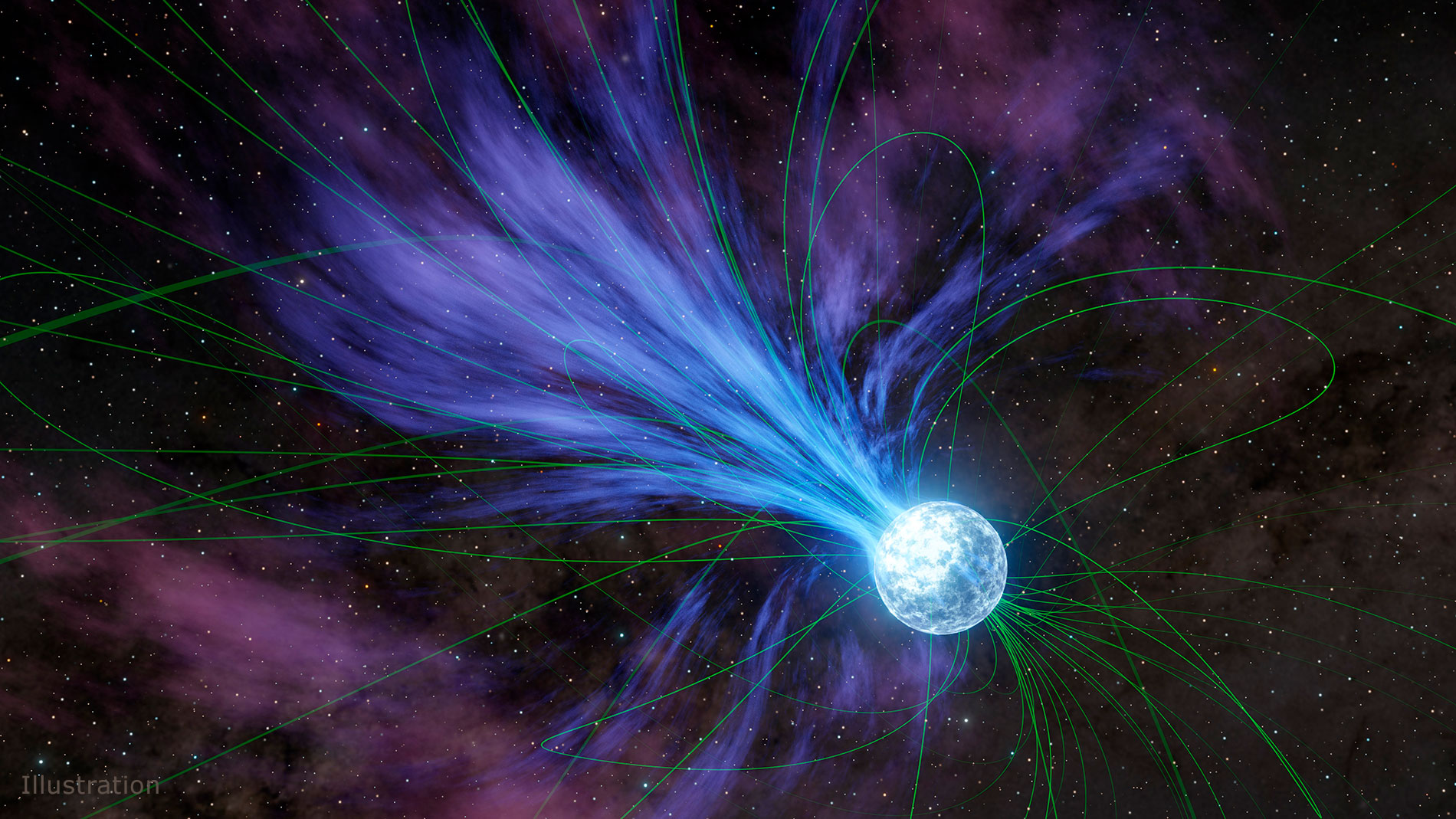For decades, astronomers have been puzzled by the detection of random, mysterious radio bursts that seemingly originate from deep space. Recently, a team announced the detection of another one of these puzzling radio bursts, which was observed by two NASA X-ray telescopes — the Neutron Star Interior Composition Explorer (NICER) and Nuclear Spectroscopic Telescope Array (NuSTAR) telescopes, which both operate from low-Earth orbit.
The radio burst observed by NICER and NuSTAR is called a “fast radio burst” and was detected by both telescopes just minutes before and minutes after the event occurred. The detection of the burst by both telescopes at the same time has provided scientists with unprecedented amounts of data, allowing them to zoom into the radio burst and gain a better understanding of the extreme nature of the phenomenon.
Even though these radio bursts are thought to occur in deep space, these events release extremely high amounts of energy, with fast radio bursts specifically releasing as much energy as the Sun does in an entire year in the span of just a fraction of a second.
However, the quick nature of the bursts makes their origin very difficult to pinpoint for scientists. Throughout the last few decades, all detected bursts were traced to some location outside of the Milky Way, meaning that whatever created the bursts was too far away for astronomers to decipher. However, a fast radio burst that occurred on April 28, 2020, was found to have occurred within the Milky Way.
Astronomers eventually traced the burst’s origin to an extraordinarily dense object called a magnetar, which is a type of neutron star. Neutron stars are the left-over remnants of exploded stars and represent the collapsed core of the exploded star. Following the 2020 burst, scientists were able to learn more about the nature of radio bursts and magnetars, which allowed them to further characterize radio bursts that originated from outside the Milky Way.
Interestingly, in October 2022, the same magnetar — named SGR 1935+2154 — emitted another fast radio burst. At the moment of the burst, NASA’s NICER and NuSTAR happened to be observing SGR 1935+2154 at the same time, with both telescopes having already observed the magnetar for several hours. Following the detection of the burst, the telescopes continued to collect data on SGR 1935+2154 in order to catch a glimpse of what happens within and around a magnetar when a radio burst is emitted, as well as what happens just before and just after a burst has been emitted.
The 2022 SGR 1935+2154 burst occurred between two periods of time wherein the magnetar’s rotational rate began to rapidly increase. Magnetars are small cosmic objects that rotate extremely fast, with SGR 1935+2154 measuring just 20 kilometers in diameter and rotating approximately 3.2 times per second — meaning that the surface of SGR 1935+2154 rotates at approximately 11,000 kilometers per hour. To slow or speed up such a rapidly rotating object would require an immense amount of energy — but SGR 1935+2154 didn’t act this way.
The team of researchers analyzing the data from the event noted that the magnetar slowed down between the two periods of increased rotation (called “glitches”), decreasing its rotational speed in just nine hours. This observation surprised the scientists, as the sudden decrease in rotational speed occurred around 100 times faster than has ever been recorded.
“Typically, when glitches happen, it takes the magnetar weeks or months to get back to its normal speed. So clearly, things are happening with these objects on much shorter time scales than we previously thought, and that might be related to how fast radio bursts are generated,” said lead author and astrophysicist Chin-Ping Hu of the National Changhua University of Education in Taiwan.
Artist’s concept of a radio burst erupting from a magnetar. (Credit: NASA’s Goddard Space Flight Center/Chris Smith (USRA))
While the glitches may explain the production of radio bursts from magnetars, understanding exactly how magnetars produce radio bursts is difficult, and scientists have to consider tens or hundreds of different variables to confirm a hypothesis.
One such variable is gravity. Neutron stars and magnetars are among the most dense cosmic objects known to exist in the universe, with a teaspoon of their surface material massing about a billion tons on Earth. Given that the gravitational force of a cosmic object is directly related to that object’s density, the gravitational field of a neutron star and magnetar is extraordinarily strong. For example, a marshmallow falling onto the surface of a neutron star would create the same force as an atomic bomb upon impact with the surface.
This extreme gravitational force means that the surface of a magnetar is very volatile, as it regularly releases large bursts of X-rays and other forms of high-energy light. The NICER and NuSTAR data from the 2022 SGR 1935+2154 burst showed that there was an increase in the amount of X-ray and high-energy light eruptions from the magnetar in the time leading up to the radio burst. This increase in high-energy light around SGR 1935+2154 is actually what led NICER and NuSTAR teams to orient their spacecraft in the direction of the magnetar.

Rendering of NuSTAR. (Credit: NASA)
“All those X-ray bursts that happened before this glitch would have had, in principle, enough energy to create a fast radio burst, but they didn’t. So it seems like something changed during the slowdown period, creating the right set of conditions,” said co-author and research scientist of the University of Maryland and NASA’s Goddard Space Flight Center in Maryland.
However, what else could explain the 2022 burst from SGR 1935+2154 and the emissions of high-energy light before the burst?
One potential explanation could be that since the exterior of a magnetar is solid, the extreme density of the magnetar would for the interior of the star to become a superfluid. If this is the case, then the exterior and interior of SGR 1935+2154 would live in a delicate balance, wherein the internal superfluid can deliver immense eruptions of energy to the surface of the magnetar — eventually creating fast radio bursts. Hu et al. believe that this is what likely created both of the glitches that occurred before and after the radio burst.
If the first of the two glitches, occurring before the eruption of the burst, created a sharp crack in the surface of the magnetar due to the immense forces of its fluctuating rotational rate, then SGR 1935+2154 likely would’ve released material from the interior of the star into space — creating a radio burst. In physics, when a spinning object loses mass, then its rotational rate will slow down. Thus, scientists believe that the eruption of internal material into space — the fast radio burst — may have been what caused the rapid decrease in rotational rate between the two glitches.
What’s causing mysterious bursts of radio waves from deep space?
Astronomers may be a step closer to an answer after using two X-ray telescopes to zoom in on a dead star’s erratic behavior. Learn how we’re breaking down the data.
— NASA JPL (@NASAJPL) February 14, 2024
Nonetheless, the teams have only been able to observe one of these events in real time. As such, Hu et al. still can’t fully determine with confidence which of the aforementioned factors (as well as others like a magnetar’s complex magnetic field) specifically leads to the creation of fast radio bursts. Some of these factors may have absolutely nothing to do with radio bursts and their creation.
“We’ve unquestionably observed something important for our understanding of fast radio bursts. But I think we still need a lot more data to complete the mystery,” said researcher George Younes at Goddard and a member of a NICER team that specializes in magnetars.
Hu et al.’s results were published on Feb. 14 in the journal Nature.
(Credit: Artist’s depiction of a radio burst erupting from a magnetar. Credit: NASA/JPL-Caltech)




